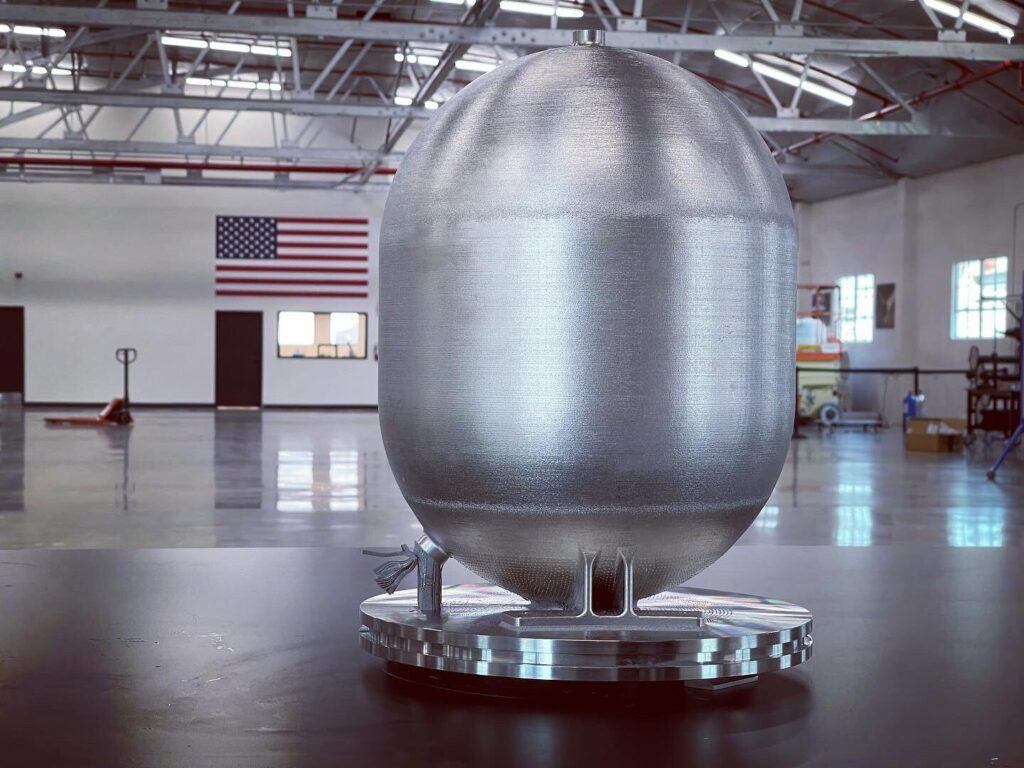The partnership between Velo3D and Launcher is further proving out the value of 3D printing for delivering satellites to orbit cost-effectively and with destination-orbit flexibility. In April 2021, Launcher purchased a Velo3D Sapphire metal additive manufacturing solution to print rocket engine parts in Inconel last. Now the company has added a second one that prints in titanium.
Following successful testing at NASA’s Stennis Space Center of Launcher’s liquid oxygen (LOX) turbopump for its high performance closed-cycle liquid rocket engine, Launcher is now working with Velo3D to 3D print its fuel pump, flight turbine housing parts, and Orbiter pressure vessels—the latter to be manufactured with the second Velo3D Sapphire metal AM system.
“Velo3D really delivered on our turbopump, including its 3D printed rotating impeller, all of which functioned perfectly the very first time at 30,000 rpm, using the first prototype,” said Max Haot, Founder & CEO of Launcher.
“Rocket engine turbopump parts typically require casting, forging and welding. Tooling required for these processes increases the cost of development and reduces flexibility between design iterations. The ability to 3D print our turbopump—including rotating Inconel shrouded impellers, thanks to Velo3D’s zero-degree technology makes it possible now at a lower cost and increased innovation through iteration between each prototype.”
Manufacturing on Demand
 Founded in 2017, Launcher is an emerging-technology company dedicated to developing efficient rockets that can deliver small satellites to orbit. Their “Launcher Light” rocket will carry payloads of up to 150 kgs (330 lbs) to low-earth orbit, using a single E-2 engine. A first launch is scheduled for 2024.
Founded in 2017, Launcher is an emerging-technology company dedicated to developing efficient rockets that can deliver small satellites to orbit. Their “Launcher Light” rocket will carry payloads of up to 150 kgs (330 lbs) to low-earth orbit, using a single E-2 engine. A first launch is scheduled for 2024.
One of the company’s strategies is to use additive manufacturing in as many rocket components as possible. While Launcher’s new advanced manufacturing facility in Los Angeles will include a wide variety of in-house capabilities, the company also plans to take advantage of Velo3D’s contract manufacturing partners like Stratasys Direct Manufacturing when scaling up production, particularly for AM.
“We’re very excited about working with innovative companies like Launcher,” said Benny Buller, founder and CEO of Velo3D. “Not only have they already proven out the value and experienced the quality of advanced metal AM through current projects, they understand the potential that this technology holds for expanding the success of their out-of-this-world enterprise.”
In March, Velo3D announced plans to merge with JAWS Spitfire Acquisition Corporation (NYSE: SPFR) and become a public company.
You might also like:
KAM adds third SLM 280 3D printer, brings PBF systems total to 21: The full line up also includes two EOS M 400-4 Quad Laser with 400W Lasers (Build Volume: 400mm X 400mm X 400mm), one EOS M 290 with 400W Laser (Build Volume: 250mm X 250mm X 325mm), thirteen (!) EOS M 280 with 400W Laser (Build Volume: 250mm X 250mm X 325mm), one SLM 800 Quad Laser with quad-700W Lasers (Build Volume: 496mm X 277mm X 800mm), three SLM 280 Dual Laser with dual-700W Lasers (Build Volume: 280mm X 280mm X 365mm) and one GE Concept Laser M2 Multi-laser machine (Build Volume: 250mm X 250mm X 350mm).
* This article is reprinted from 3D Printing Media Network. If you are involved in infringement, please contact us to delete it.
Author: 3D Printing Media Network

Leave A Comment